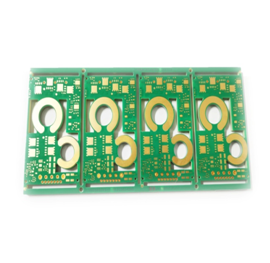As we all know, the circuit board cleaning technology has a very important position for the PCB copy board of the PCB factory. Since it is necessary to ensure the cleanliness of the circuit board itself in order to accurately scan and generate the file map, the cleaning technology of the circuit board has also become an important "technical activity." Four methods for the new generation of circuit board cleaning technology have been introduced.
1. Water cleaning technology for PCB copy board
The water cleaning technology of PCB factory is the development direction of cleaning technology in the future, and it is necessary to set up pure water source and discharge water treatment workshop. It uses water as the cleaning medium, and adds surfactants, additives, corrosion inhibitors, chelating agents, etc. to the water to form a series of water-based cleaning agents. Can remove water solvents and non-polar contaminants. The characteristics of the cleaning process are:
(1) Good safety, non-flammable, non-explosive, and basically non-toxic;
(2) The composition of the cleaning agent has a large degree of freedom, and it is easy to clean both polar and non-polar pollutants, and the cleaning range is wide;
(3) Multiple cleaning mechanisms. Water is a very polar solvent. In addition to dissolving, it also has saponification, emulsification, displacement, and dispersion. The use of ultrasound is much more effective than in organic solvents;
(4) As a natural solvent, its price is relatively low and its sources are wide.
The disadvantages of water cleaning are:
(1) In areas where water resources are scarce, because this cleaning method requires a large amount of water resources, it is restricted by local natural conditions;
(2) Some components cannot be cleaned with water, and metal parts are easy to rust;
(3) The surface tension is large, it is difficult to clean small gaps, and it is difficult to completely remove the residual surfactant;
(4) It is difficult to dry and consumes a lot of energy;
(5) The cost of the equipment is high, a wastewater treatment device is required, and the equipment occupies a large area.

2. Semi-aqueous cleaning technology for PCB copy board
Semi-aqueous cleaning mainly uses organic solvents and deionized water, plus a cleaning agent composed of a certain amount of active agents and additives. This type of cleaning is between solvent cleaning and water cleaning. These cleaning agents are organic solvents, flammable solvents, relatively high flash point, relatively low toxicity, relatively safe to use, but must be rinsed with water, and then dried. Some cleaning agents add 5% to 20% of water and a small amount of surfactant, which not only reduces the flammability, but also makes rinsing easier. The characteristics of the semi-aqueous cleaning process are:
(1) The cleaning ability is relatively strong, it can remove both polar and non-polar pollutants at the same time, and the cleaning ability is strong;
(2) Two different types of media are used for cleaning and rinsing, and pure water is generally used for rinsing;
(3) Drying is required after rinsing.
The disadvantage of this technology is that the treatment of waste liquid and wastewater is a relatively complicated problem that has yet to be completely solved.
3. No-cleaning technology for PCB copy board
PCB factories use no-clean flux or no-clean solder paste in the soldering process, and directly enter the next process after soldering without cleaning. No-clean technology is currently the most used alternative technology, especially mobile communication products. Use no-clean method to replace ODS. At present, many no-clean fluxes have been developed at home and abroad, such as Beijing Jingying Company's no-clean flux. No-clean fluxes can be roughly divided into three categories:
(1) Rosin type flux: Inert rosin solder (RMA) is used for reflow soldering, which can be free of cleaning.
(2) Water-soluble flux: clean with water after welding.
(3) Low solid content flux: no cleaning.
No-clean technology has the advantages of simplifying the process flow, saving manufacturing costs and less pollution. In the past ten years, the widespread use of no-clean soldering technology, no-clean flux and no-clean solder paste is a major feature of the electronics industry at the end of the 20th century. The ultimate way to replace CFCs is to achieve no-clean.
4. Solvent cleaning technology for PCB copy board
Solvent cleaning mainly uses the solvent's solvency to remove contaminants. Using solvent for cleaning, because of its fast volatilization and strong dissolving ability, the equipment requirements are simple. According to the selected cleaning agent, it can be divided into flammable cleaning agent and non-flammable cleaning agent. The former mainly includes organic hydrocarbons and alcohols (such as organic hydrocarbons, alcohols, glycol esters, etc.), and the latter mainly includes chlorine Hydrocarbons and fluorinated hydrocarbons (such as HCFC and HFC), etc.